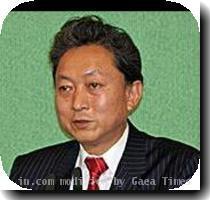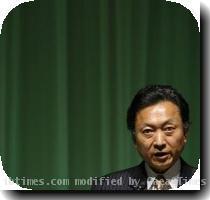‘World’s most dangerous base:’ Japan, US at standoff over future of Marine base
By Eric Talmadge, APTuesday, December 29, 2009
Standoff over US base closure sours US-Japan ties
GINOWAN, Japan — When the U.S. took over a Japanese airfield here in the closing days of World War II, it was surrounded by sugarcane fields and the smoldering battlegrounds of Okinawa. It is now the focus of a deepening dispute that is testing Japan’s security alliance with the United States and dividing its new government in Tokyo.
A large city has grown up around the base, and helicopters and cargo planes from the U.S. Marine Corps facility buzz so low over Futenma No. 2 Elementary School, whose playground fence borders the facility, that the windows rattle and teachers stop class until the aircraft are on the ground.
“It’s just too much,” said the school’s vice principal, Muneo Nakamura. “I understand the political role the U.S. bases in Japan play. But we have to live here.”
That Marine Corps Air Station Futenma must go is not the dispute. U.S. military officials agree the base must be moved. The problem is where.
The United States says that Futenma cannot be shut down until a replacement is elsewere on Okinawa, an idea that most Okinawans oppose. They have the ear of a new left-leaning Japanese government that took office in September and is reassessing the U.S.-Japan alliance.
The standoff has clouded relations between Tokyo and Washington, delayed a plan to restructure America’s military presence in Asia and divided Japan’s political leadership. It comes as China’s rising military strength and North Korea’s nuclear program are changing the security landscape in Asia, underscoring the importance for the U.S. and Japan of keeping the issue from creating a major rift.
In Ginowan, the city of 92,000 where the base is located, patience is wearing thin.
The Futenma facility, home to about 2,000 Marines and one of the Marines’ largest facilities in the Pacific, is surrounded by urban sprawl.
The population density outside the base is roughly equivalent to downtown Tokyo. Intense training by helicopters and planes off a 9,186-foot (2,800-meter) runway has prompted residents to dub Futenma “the most dangerous base in the world.”
The base takes up roughly a quarter of the city’s land. Residents must drive around it, causing traffic jams, delays and frustration. Sewer and water lines have been detoured around its perimeter.
“This base violates so many regulations and safety rules that it would be illegal to operate it in the United States,” Yoichi Iha, the mayor of Ginowan, told The Associated Press. “The situation has just been left to fester for too long, and no one has been willing to accept responsibility to do anything.”
He also accused the Marines of regularly ignoring agreements on when and where they can fly. The city is installing a 2 billion yen ($20 million) radar system next year to keep tabs on them. A Japanese court ruled last year the noise levels are unacceptable, and ordered the Japanese government to compensate residents. An appeal is ongoing.
Lt. Col. Douglas Powell, a spokesman for the Okinawa Marines, said no flights are conducted after 11:00 p.m. and the airstrip is closed on Sundays.
“Night training flights are limited to the minimum required to fulfill assigned missions and maintain aircrew proficiency,” he said. “Flight patterns can vary due to weather conditions such as wind velocity and wind direction. Marine Corps pilots make every effort to minimize overflight of civilian population centers, but, first and foremost, must ensure safe flight operations.”
Progress on the Futenma issue has generally only occurred after major incidents have sent Okinawans into the streets in protest.
Following a public uproar over the rape of a local schoolgirl by two Maines and a sailor, Tokyo and Washington agreed in 1996 to close the base. The deal bogged down in the details, including finding an alternative site both sides could agree on.
After a helicopter from Futenma crashed on the Okinawa International University campus near the base in August 2004, another agreement was announced in 2006. The university was closed at the time and no one was killed on the ground.
That “strategic roadmap” included moving the facility farther north to a less crowded area and reducing the U.S. presence in Okinawa by transfering 8,000 Marines from Futenma and other bases to Guam, a tiny U.S. territory in the Pacific.
It would be the most sweeping realignment of the 47,000 U.S. troops in Japan since the Vietnam War.
But the decision to replace the Futenma base with another on the outskirts of Nago, another Okinawan city, sparked intense protests.
The new base would likely require bulldozing beaches near an existing Marine facility, Camp Schwab.
“We are not going to let them destroy our ocean to build another military base,” said Hiroshi Aratomi, the co-leader of a group that has held a daily sit-in for the past five years. “We will be glad to see Futenma go, but not at the price of simply substituting it with another base in our backyard.”
The protests by Nago residents have effectively thwarted efforts to finally settle on a site and have the sympathy of Okinawans in general, who would prefer that no replacement facility be built on their island at all.
The United States insists the base must stay somewhere on Okinawa so that the Marine units remain cohesive.
Japan’s new government is listening to the protesters, at least for the moment .
In large part, that reflects domestic politics. Mizuho Fukushima, head of the Social Democratic Party, has threatened to pull her party out of the ruling coalition if the base remains on Okinawa.
Her threat is seen as a major factor behind Prime Minister Yukio Hatoyama’s reluctance to make a decision on the issue.
“I am optimistic something can be done to move the base off Okinawa or out of the country,” Fukushima said after a meeting with Okinawa’s governor, Hirokazu Nakaima, this month. “We must do our best to see that it is closed soon.”
Tags: Asia, East Asia, Ginowan, Japan, Military Facilities, North America, Tokyo, United States, Yukio Hatoyama


